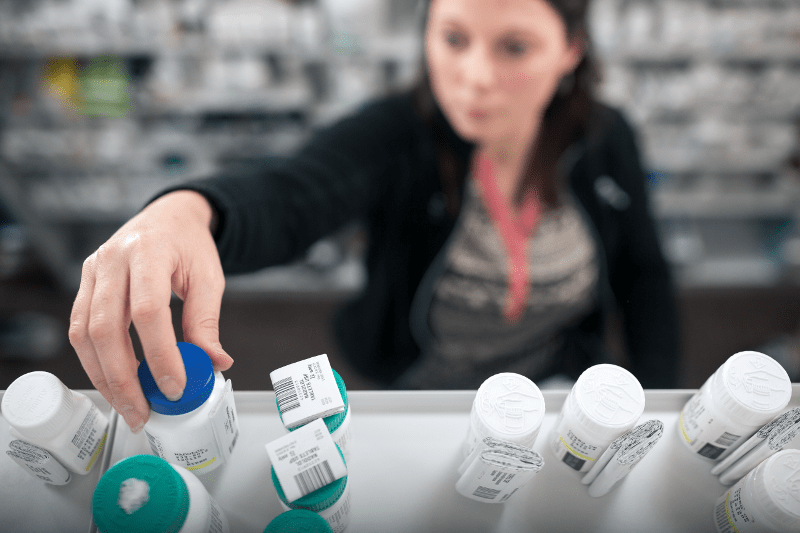What Patients Want From Pharmacies Beyond Prescriptions

What do consumers want from their local pharmacy? And how can pharmacies use that knowledge to boost their relationships?
These are the types of questions pharmacies are asking as they seek out new ways to engage customers and provide a higher level of care in 2024 – and stay profitable.
To dig deeper, Outcomes commissioned an online survey in December 2023 of more than 500 U.S. consumers ages 25+. The goal was to reaffirm not only what patients love (easy immunizations and text-based reminders), but to unearth new areas of opportunity for pharmacies in 2024.
While many of survey’s findings align with broader, widely recognized industry trends, other findings point to new areas of opportunity that pharmacists may not have yet maximized.
How Patients are Interacting with Pharmacies
More than ever, patients are loyal to their local pharmacists and overwhelmingly trust them. According to the Outcomes survey results highlighted in a recent white paper:
- More than 95% of patients are comfortable receiving communications about prescriptions from pharmacists, including information about vaccines.
- On average, respondents have been using their current pharmacy for filling prescriptions for 6.5 years, even longer than they’ve had their current primary care physician (5.8 years, on average).
- One-third of respondents said they had a “very high” level of trust in their pharmacist.
- More than four in five respondents termed their level of trust either moderately high or very high.
- 1 in 5 respondents indicated they both know their pharmacist by name and vice versa.
These findings align with other industry studies: According to a CVS Health survey nearly seven in 10 Americans prefer pharmacies for their healthcare needs because of their convenient locations and evening and weekend hours of operation.
Patients not only trust pharmacies, but they also are increasingly looking to them for clinical services that go beyond filling prescriptions. The most popular pharmacy services, in which at least 8 in 10 respondents said they had received or would be open to receiving, included:
- Covid testing (92%)
- Blood pressure measurement (91%)
- Vaccine administration (88%)
- Personalized medication review of current prescriptions (85%)
- Telehealth consultations (80%).
Generational Differences
While all consumers are warming up to pharmacies for a broader range of services, it’s important to note that there are big differences among certain demographics.
For example, a whopping 66% of 25- to 34-year-olds said they would be open to a pharmacy “conducting or managing an intervention for a family member” compared with 28% of respondents ages 65+. The whitepaper highlights other examples of such discrepancies, which could, in turn, provide key insights into targeting specific demographics, such as Medicare-eligible seniors in a rural U.S. town.
Expanding clinical services will not only generate revenue growth, but it will further establish pharmacies as a trusted resource and partner in promoting patients’ wellbeing and overall satisfaction.
As such, the Outcomes survey indicated several new services consumers would like pharmacies to offer, including:
- Quick wellness visits
- Mental health and wellness assessments
- Ideas for saving money on scripts
- On-site physician visits
- Diabetes management
- UTI medications and STI screenings
Connecting with Consumers
Due to the proximity of pharmacists to consumers in their communities, a significant opportunity exists for pharmacies to become gatekeepers to better patient/member engagement. In doing so, they would benefit not only patients, but their partners -- healthcare stakeholders such as payers and pharmaceutical companies.
The easiest change to make? Improve omnichannel communications with patients.
Not only are patients more comfortable with pharmacies, but the vast majority of Americans — up to 90% — believe that a connected, digital pharmacy experience enhances the overall patient experience, according to the CVS Health survey.
The Outcomes Survey and whitepaper highlights similar findings. Among a list of five digital methods of interacting with pharmacies, three had been widely used by more than 90% of survey respondents (SMS messages to pick up prescriptions, etc.). While not widely used , logging into the pharmacy’s patient portal also registered at a fairly high level (45%) of comfort among nonusers.
These findings indicate that patients are fully onboard with communicating with their pharmacy via text message or patient portal, although they still prefer picking up prescriptions and connecting with pharmacist in person.
The takeaway: Pharmacies that invest in robust MTM platforms and workflow solutions will be well positioned to meet customer needs in the future. Looking for more ways to optimize opportunities and maximize profits this year?





